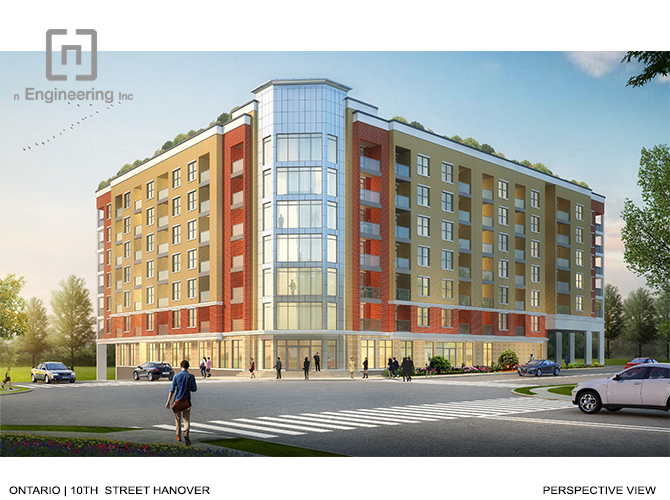In a bustling urban environment like Toronto, the role of a traffic engineer is critical for ensuring efficient traffic flow, pedestrian safety, and sustainable urban mobility. n Engineering is a prominent player in this field, dedicated to addressing Toronto’s traffic-related challenges and helping shape its infrastructure to meet modern demands. Traffic engineers play a vital role in analyzing, designing, and implementing solutions that enhance both efficiency and safety on the city’s roads and highways. In this article, we will delve into the role of a Traffic Engineer in Toronto, examine the unique challenges of traffic management in the city, and explore how n Engineering applies its expertise to provide effective, sustainable solutions.
Understanding the Role of a Traffic Engineer
A traffic engineer focuses on creating safe, efficient systems for the movement of people and goods. This field of engineering requires expertise in analyzing traffic patterns, implementing control devices, optimizing road and intersection designs, and ensuring safety for all road users. Traffic engineers also consider environmental impact and work closely with urban planners, architects, and civil engineers to create well-integrated transportation systems.
In Toronto, where traffic congestion and population growth continue to be pressing concerns, traffic engineers bring valuable insights to improving road infrastructure. By balancing the demands of vehicular traffic, public transit, cycling lanes, and pedestrian spaces, they work to create sustainable, resilient, and user-friendly urban transportation systems.
Key Responsibilities of a Traffic Engineer in Toronto
- Traffic Flow Analysis
A Traffic Engineer in Toronto must conduct thorough analyses of traffic flow across the city. By studying traffic patterns, they identify bottlenecks, high-risk areas, and times of peak congestion. These insights guide decisions on road expansions, traffic signal optimization, and the addition of turning lanes, all designed to reduce congestion. - Safety Assessments
Safety is paramount in traffic engineering. Traffic engineers focus on reducing the likelihood of accidents and improving road user safety. By designing effective signage, signals, and crosswalks, they mitigate accident risks and make the roads safer for both drivers and pedestrians. - Traffic Control Devices
Traffic engineers are responsible for implementing and maintaining traffic control devices such as stop signs, traffic lights, and speed limits. These measures are designed to regulate traffic flow and ensure compliance with road safety regulations. - Intersection and Road Design
Properly designed intersections and roads significantly reduce traffic congestion and improve safety. Traffic engineers assess existing infrastructure and develop plans for improved intersections, road widening, and turn lanes, helping to alleviate congestion and accommodate growth in vehicle and pedestrian traffic. - Environmental Impact Assessment
Traffic engineers consider the environmental effects of proposed transportation projects. By designing more efficient traffic systems, they can reduce vehicle emissions and promote environmentally friendly transportation options.
Traffic Engineering Challenges in Toronto
Toronto’s urban infrastructure presents unique challenges to traffic engineers, including high population density, diverse road users, and a dynamic urban landscape. As the city continues to expand, it faces increasing demands on its transportation systems.
- Traffic Congestion
Toronto is one of Canada’s busiest cities, and congestion is a persistent problem. A traffic engineer Toronto must develop strategies to alleviate gridlock, such as optimizing signal timing, improving road capacity, and encouraging the use of public transit. - Infrastructure Limitations
Much of Toronto’s infrastructure is aging and not designed for the current levels of traffic. Traffic engineers at n Engineering work with existing infrastructure to enhance its efficiency while planning for new projects that will accommodate future growth. - Sustainable Transportation Needs
The city is committed to sustainable transportation, promoting walking, biking, and public transit. Traffic engineers need to create road systems that balance these diverse needs and encourage green modes of transportation, such as adding bike lanes and prioritizing transit corridors. - Safety for Diverse Road Users
Toronto’s roadways host a wide variety of users, including cars, bicycles, buses, and pedestrians. Traffic engineers must account for the needs and behaviors of all these groups, ensuring that each has safe and accessible routes. - Climate Resilience
Extreme weather conditions, such as snowstorms and heavy rains, significantly impact Toronto’s road infrastructure. n Engineering focuses on designing systems that can withstand these challenges, ensuring uninterrupted traffic flow and safety even during adverse weather.
How N Engineering Supports Traffic Engineering in Toronto
n Engineering is a leader in the field of traffic engineering Toronto, providing comprehensive traffic solutions that address both current and future needs. Through a combination of innovative technologies and a commitment to sustainability, n Engineering helps improve traffic flow, reduce congestion, and enhance road safety.
- Advanced Traffic Analysis Tools
n Engineering uses cutting-edge traffic analysis tools to collect real-time data, simulate traffic patterns, and identify areas for improvement. These tools help traffic engineers design efficient road networks that respond to Toronto’s unique needs. - Sustainable Design Solutions
In line with Toronto’s environmental goals, n Engineering incorporates sustainable practices in every project. From designing bike lanes to enhancing pedestrian-friendly zones, their engineers work to reduce vehicular dependency and promote eco-friendly alternatives. - Customized Traffic Solutions
Recognizing that each neighborhood in Toronto has specific traffic needs, n Engineering tailors its solutions to the unique characteristics of each area. Whether improving traffic flow around busy commercial areas or enhancing safety in residential neighborhoods, they provide customized designs that cater to local requirements. - Community Engagement and Awareness
Traffic projects often affect communities, and n Engineering actively engages with residents to gather input and address concerns. They prioritize transparency and work to implement solutions that are both effective and publicly supported. - Collaboration with Public Agencies
n Engineering collaborates closely with local authorities and public transportation agencies to ensure alignment with city policies and objectives. This coordination helps create cohesive, city-wide improvements that benefit all road users.
Innovative Traffic Engineering Solutions
To meet Toronto’s transportation challenges, traffic engineers are increasingly turning to innovative solutions. These include:
- Smart Traffic Signals
By implementing adaptive signal control technology, traffic engineers can adjust signal timing based on real-time traffic conditions. This reduces delays and helps traffic flow more smoothly. - Intelligent Transportation Systems (ITS)
ITS integrates communication and information technology with transportation infrastructure, enhancing traffic flow and safety. These systems include traffic cameras, sensors, and digital signage, all of which help n Engineering monitor and manage Toronto’s traffic. - Dedicated Bike Lanes and Pedestrian Zones
Traffic engineers in Toronto are prioritizing non-vehicular road users by designing dedicated bike lanes and pedestrian zones. These improvements not only reduce congestion but also promote healthier, more sustainable transportation choices. - Traffic Calming Measures
In residential areas, n Engineering employs traffic calming measures like speed bumps, roundabouts, and narrower lanes to slow down traffic and create safer environments for pedestrians and cyclists. - Public Transit Priority Systems
Giving priority to public transit vehicles at intersections helps reduce delays for buses and streetcars, encouraging more people to opt for public transportation over private cars.
Future Prospects for Traffic Engineering in Toronto
As Toronto’s population continues to grow, so will the demand for improved traffic systems. Traffic engineers, like those at n Engineering, will be instrumental in guiding the city toward a future with less congestion, safer roads, and more sustainable transportation options.
n Engineering is poised to continue making substantial contributions to traffic engineering in Toronto. They focus on:
- Integration with Autonomous Vehicles (AVs): As AV technology becomes more prevalent, n Engineering is preparing to incorporate AV-friendly features into Toronto’s road infrastructure.
- Enhanced Data Analytics: By expanding data collection and analytics, traffic engineer Toronto experts can gain better insights into traffic behavior and anticipate future demands.
- Environmental Initiatives: Sustainability remains a core value. Traffic engineers at n Engineering are exploring additional green infrastructure solutions to minimize the environmental footprint of Toronto’s roadways.
- Community-Centric Designs: As Toronto becomes more community-focused, traffic engineers will work on designing spaces that are both functional for traffic flow and conducive to social interaction and community well-being.
Conclusion
The role of a Traffic Engineer in Toronto is crucial in shaping the city’s transportation landscape. As Toronto continues to grow, n Engineering remains committed to developing traffic solutions that address the complex needs of its residents, visitors, and businesses. With a focus on sustainability, safety, and innovation, n Engineering leads the way in traffic engineering Toronto, making urban mobility more efficient, accessible, and safe for everyone

